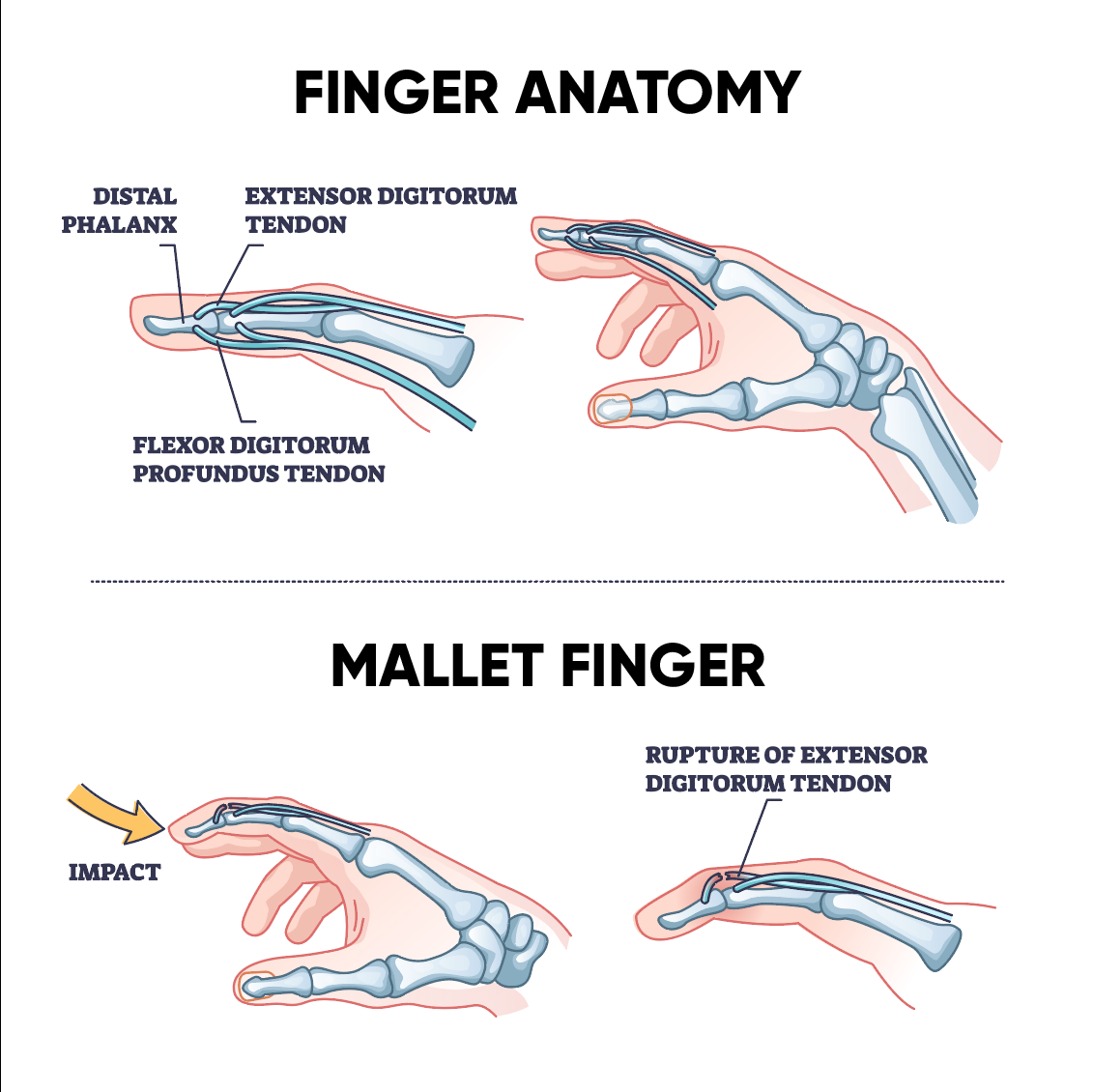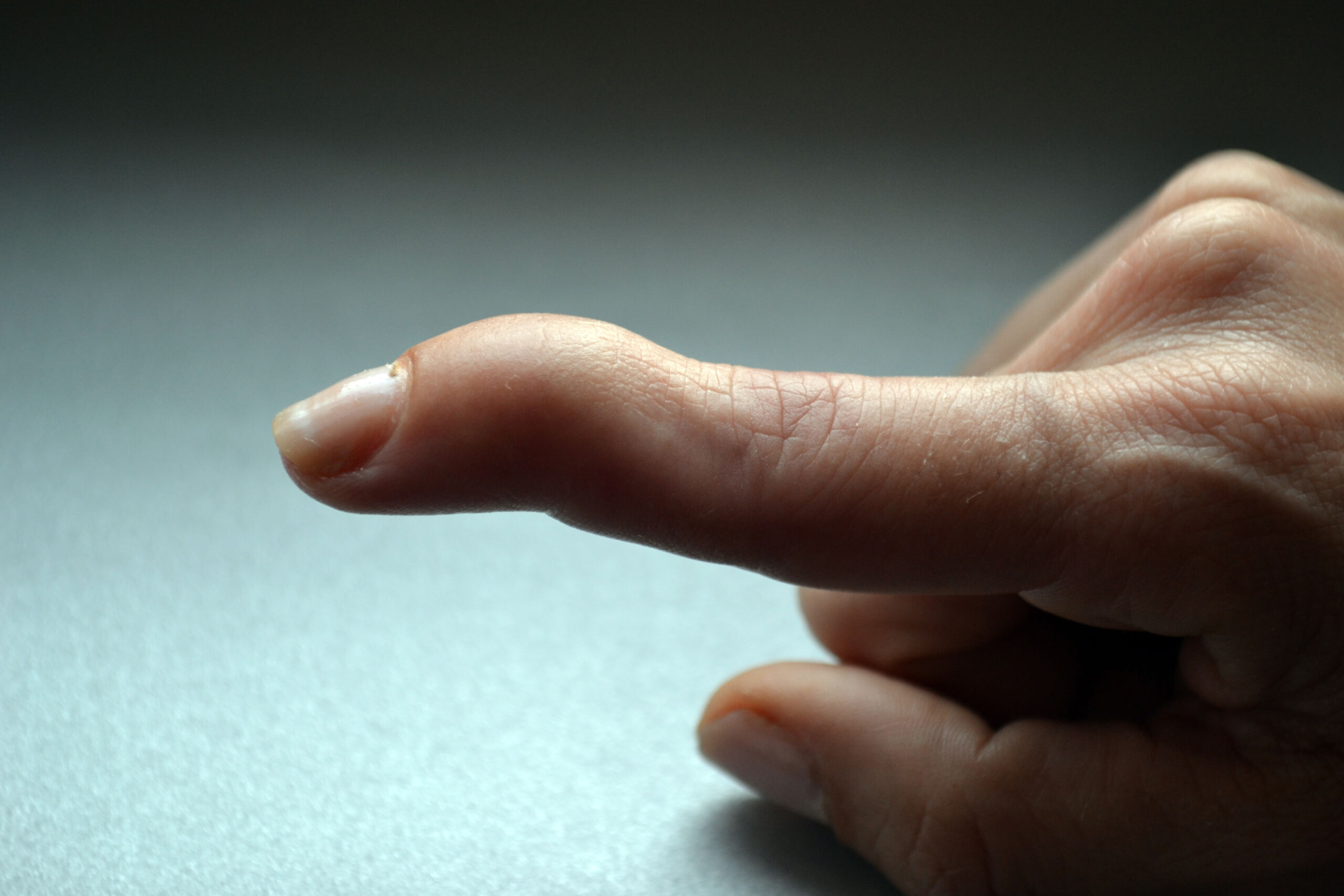Mallet Finger
Mallet finger, also known as baseball finger, is a condition that affects the extensor tendon of the finger, leading to the inability to fully extend the finger at the distal interphalangeal joint (DIP joint).
Anatomy

The human finger consists of three phalanges (bones) separated by two interphalangeal joints. The distal phalanx is the bone at the tip of the finger, the middle phalanx lies between the distal and proximal phalanges, and the proximal phalanx connects to the metacarpal bone of the hand. The DIP joint is the joint between the distal and middle phalanges, while the PIP joint is the joint between the middle and proximal phalanges.
Causes
Mallet finger typically occurs due to a forceful injury to the tip of the finger, such as a direct blow or jamming of the finger while it is extended. This force can result in a rupture or avulsion of the extensor tendon from its attachment on the distal phalanx. It can also cause a small fracture of the distal phalanx known as an avulsion fracture.

Accidental trauma, such as jamming the finger during sports or other physical activities, is a frequent cause of mallet finger.
Mallet finger can potentially occur in any finger, and the severity of the injury and treatment options may vary depending on the specific affected finger. If you suspect you have a mallet finger or any finger injury, it’s essential to seek medical attention for an accurate diagnosis and appropriate treatment.
Symptoms
The main symptom of mallet finger is the inability to extend the DIP joint actively. There is usually no pain associated with the condition, but swelling and bruising might be present. The finger will droop or rest in a flexed position, as the extensor tendon is no longer able to function properly.
Non-Surgical Treatment
Non-surgical treatment is often the first line of management for mallet finger, especially if the injury is not severe. It typically involves the use of a splint or a “mallet finger splint” to keep the DIP joint extended. The splint is worn continuously for several weeks to allow the extensor tendon to heal and reattach to the bone properly. It is crucial to follow the prescribed treatment plan and wear the splint as directed by the healthcare provider to achieve the best results.
Surgical Treatment
In some cases of severe mallet finger or if the non-surgical approach fails to provide adequate results, surgical intervention might be necessary. Surgical treatment usually involves reattaching the tendon to the bone using pins or wires to hold the bone in place during the healing process. After surgery, a splint may still be used for some time to protect the repair.
Please note that it is essential to consult a qualified healthcare professional for an accurate diagnosis and appropriate treatment plan for any medical condition, including mallet finger.
Citations
- James R. Doyle, and Jeffrey Yao. “Mallet Finger (Baseball Finger) Injuries.” StatPearls [Internet]., U.S. National Library of Medicine, 2021, www.ncbi.nlm.nih.gov/books/NBK499985/
- Geissler WB, Fernandez DL, Lamey DM. “Mallet finger: etiology, diagnosis, and treatment.” J Am Acad Orthop Surg. 1995 Jul;3(4):146-155. doi: 10.5435/00124635-199507000-00002. PMID: 10795096.
